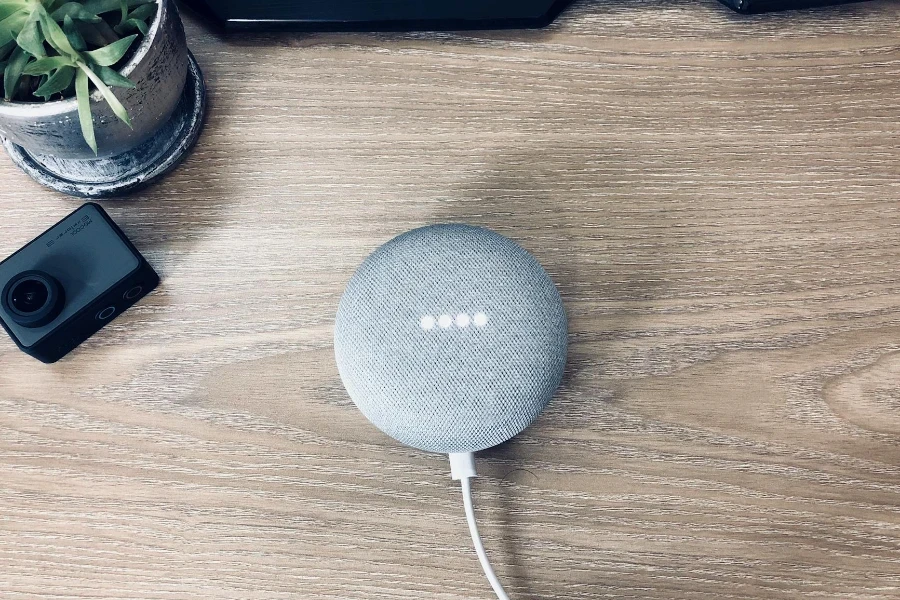O fio do alto-falante desempenha um papel fundamental na qualidade de áudio de qualquer sistema de som, mas muitas vezes é esquecido. Este guia irá desvendar os mistérios do fio do alto-falante, explicando sua função, vantagens e como selecioná-lo e utilizá-lo de forma eficaz. Esteja você configurando um home theater ou um simples sistema estéreo, compreender os fios do alto-falante é a chave para obter o melhor som.
Sumário:
1. O que é fio de alto-falante?
2. Como funciona o fio do alto-falante?
3. Benefícios e desvantagens do fio do alto-falante
4. Como escolher o fio do alto-falante
5. Como usar o fio do alto-falante
O que é fio de alto-falante?

O fio do alto-falante é a tábua de salvação de qualquer sistema de áudio, conectando amplificadores ou receptores aos alto-falantes, permitindo a passagem de sinais elétricos e a produção de som. É mais do que apenas um cabo; é um componente crítico que pode afetar significativamente a qualidade do som. Normalmente, consiste em dois condutores isolados de cobre ou alumínio, sendo o cobre o material preferido devido à sua condutividade e durabilidade superiores.
A bitola (espessura) do fio é um aspecto crucial, com números mais baixos indicando fios mais grossos. Fios mais grossos podem transportar mais corrente e são preferidos para distâncias maiores para minimizar a perda de sinal. O material de isolamento também desempenha um papel na proteção do fio contra danos físicos e interferência eletromagnética, garantindo uma transmissão de sinal limpa.
Compreender a construção básica e as características do fio do alto-falante é essencial para qualquer entusiasta de áudio. Não se trata apenas de conectar componentes; trata-se de garantir a integridade do sinal de áudio da fonte ao alto-falante, afetando tudo, desde a clareza até a profundidade do som.
Como funciona o fio do alto-falante?

O fio do alto-falante funciona como uma ponte para sinais de áudio, transferindo os impulsos elétricos de um amplificador para os alto-falantes. O princípio básico é simples: à medida que o amplificador gera um sinal de áudio, o fio do alto-falante transporta esse sinal para os alto-falantes, onde é então convertido em ondas sonoras que podemos ouvir. A eficiência e a qualidade dessa transmissão de sinal são influenciadas pelos materiais, bitola e comprimento do fio.
A resistência elétrica do fio é um fator crítico. Menor resistência significa transmissão de sinal mais eficiente, especialmente importante para distâncias mais longas. É por isso que fios mais grossos (números de bitola mais baixos) são recomendados para percursos mais longos, pois têm menos resistência do que fios mais finos. A resistência pode degradar o sinal, levando à perda de fidelidade e a um som mais fraco.
Além disso, a capacitância e a indutância do fio podem afetar a qualidade do som, alterando o sinal de maneira sutil, especialmente em altas frequências. O fio de alto-falante de alta qualidade foi projetado para minimizar esses efeitos, garantindo que o sinal que chega aos alto-falantes seja o mais próximo possível do original. Isso garante uma reprodução de som mais clara e precisa.
Benefícios e desvantagens do fio do alto-falante

O fio do alto-falante oferece vários benefícios, incluindo melhor qualidade de som, flexibilidade no posicionamento dos alto-falantes e a capacidade de personalizar seu sistema de áudio de acordo com suas preferências. O fio do alto-falante de alta qualidade pode reduzir a perda de sinal e a interferência, resultando em um som mais claro e dinâmico. Isto é particularmente perceptível em sistemas com componentes de alta qualidade, onde as nuances do áudio podem ser discernidas mais facilmente.
No entanto, também existem desvantagens a serem consideradas. Fios de alto-falante de alta qualidade podem ser caros, especialmente para configurações maiores que exigem cabos longos. Além disso, as diferenças na qualidade do som entre os fios dos alto-falantes de gama média e alta podem ser sutis e não justificar o custo para ouvintes casuais. A instalação também pode ser mais complexa, exigindo uma consideração cuidadosa da bitola, comprimento e roteamento do fio para evitar interferências e obter o som ideal.
Outra consideração é o impacto estético. Os fios dos alto-falantes podem ser intrusivos e difíceis de esconder, especialmente em espaços minimalistas ou bem projetados. Isto levou ao desenvolvimento de soluções alternativas, como alto-falantes sem fio, embora nem sempre correspondam à qualidade de som alcançada com um sistema com fio bem configurado.
Como escolher o fio do alto-falante

A escolha do fio de alto-falante correto envolve considerar vários fatores, incluindo comprimento, bitola, material e isolamento. O comprimento do fio necessário depende da distância entre o amplificador e os alto-falantes. É sempre melhor ter um pouco mais do que esticar o fio com muita força, pois isso pode afetar o desempenho.
A bitola do fio é crucial; quanto mais longo o fio, mais grosso deve ser o fio para evitar perda de sinal. Uma boa regra é usar fio de calibre 16 para distâncias de até 20 pés, calibre 14 para até 40 pés e calibre 12 para distâncias de até 60 pés. Para tiragens muito longas ou aplicações de alta potência, pode ser necessário fio de bitola 10.
O material é outra consideração importante. O cobre é o material condutor mais comum devido à sua excelente condutividade e durabilidade. Alguns fios são banhados a prata, o que pode proporcionar uma ligeira melhoria na transmissão de alta frequência, mas a um custo mais elevado. O isolamento também é fundamental, pois protege o fio contra danos e minimiza a interferência de outros dispositivos eletrônicos.
Como usar o fio do alto-falante

O uso eficaz do fio do alto-falante requer planejamento e instalação cuidadosos. Comece medindo a distância entre o amplificador e os alto-falantes para determinar o comprimento do fio necessário. É aconselhável adicionar um pouco mais de comprimento para acomodar quaisquer alterações imprevistas na configuração.
Ao conectar o fio, certifique-se de que a polaridade seja consistente em ambas as extremidades – a maioria dos fios dos alto-falantes possui marcações para distinguir os dois condutores. A polaridade inconsistente pode levar a problemas de fase, afetando negativamente a qualidade do som. Desencapar as pontas do fio e fazer uma conexão limpa e segura aos terminais é crucial para uma transmissão ideal do sinal.
O roteamento do fio também pode afetar o desempenho e a estética. Evite passar o fio do alto-falante paralelo aos cabos de alimentação para minimizar a interferência eletromagnética. Considere o uso de soluções de gerenciamento de cabos para manter os fios arrumados e fora da vista, especialmente em ambientes residenciais.
Conclusão:
O fio do alto-falante é um componente fundamental de qualquer sistema de áudio, afetando tudo, desde a qualidade do som até o posicionamento do alto-falante. Ao compreender como funciona e os fatores envolvidos na escolha e utilização, você pode melhorar significativamente sua experiência auditiva. Quer você seja um audiófilo dedicado ou um ouvinte casual, investir tempo e esforço na seleção do fio de alto-falante certo pode render dividendos na qualidade do som que seu sistema produz.




